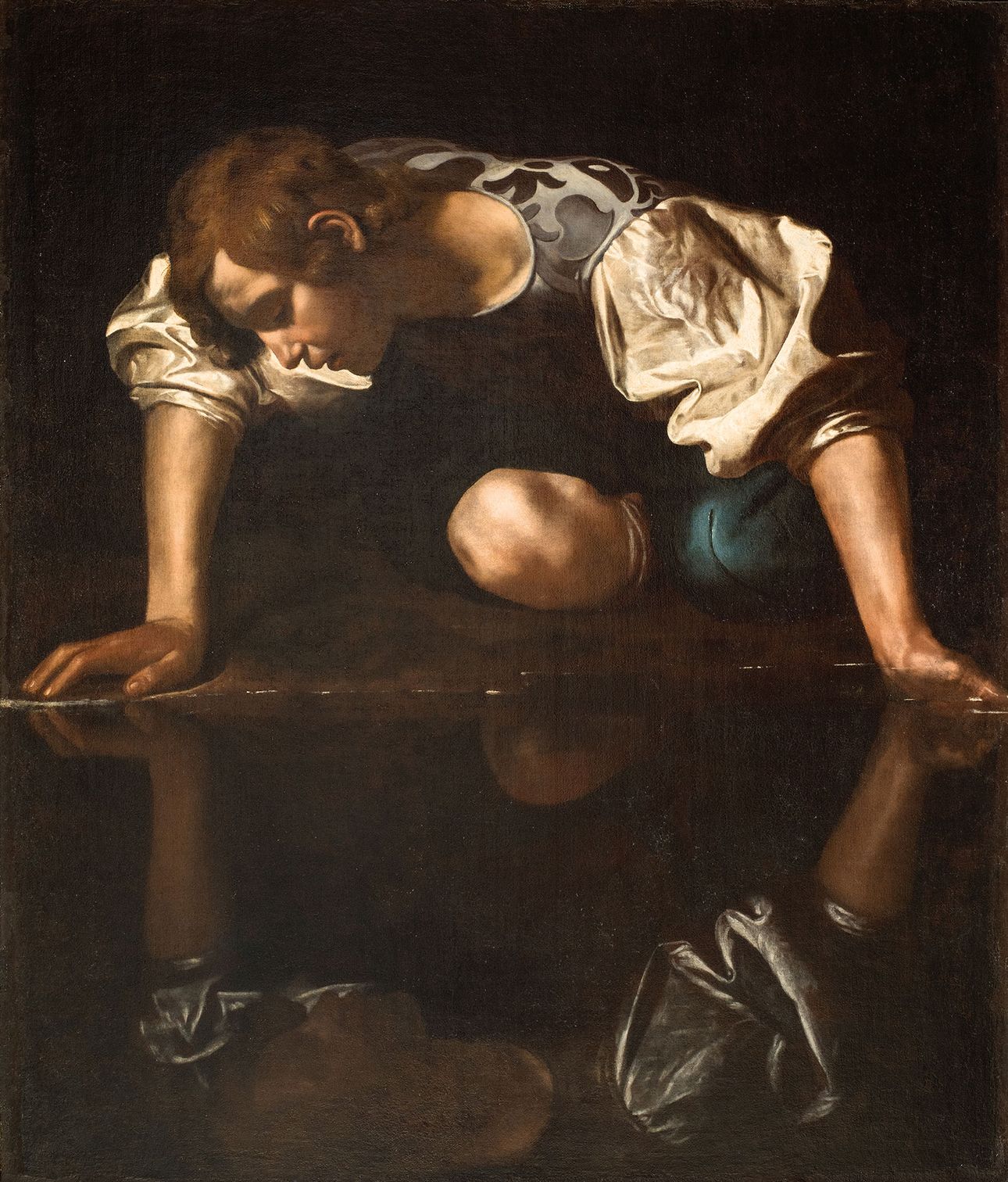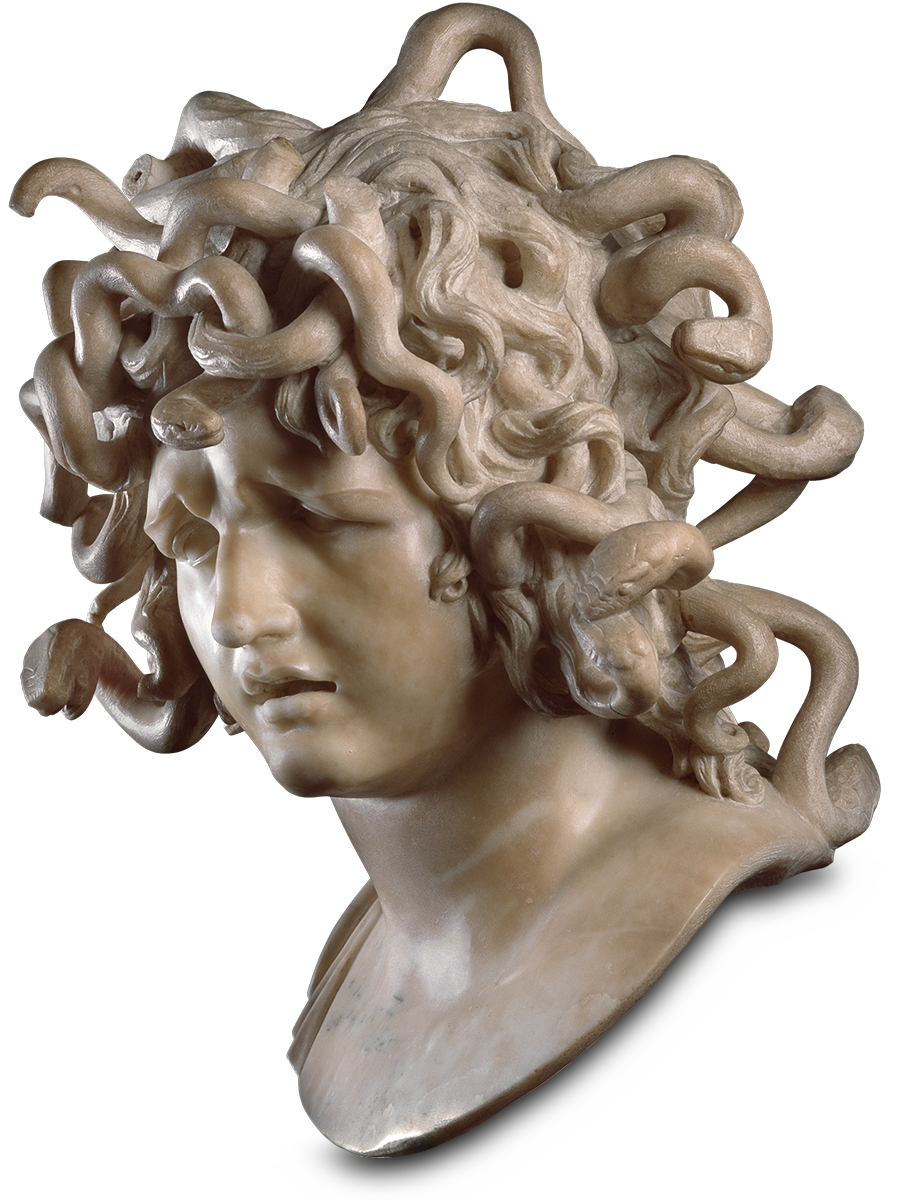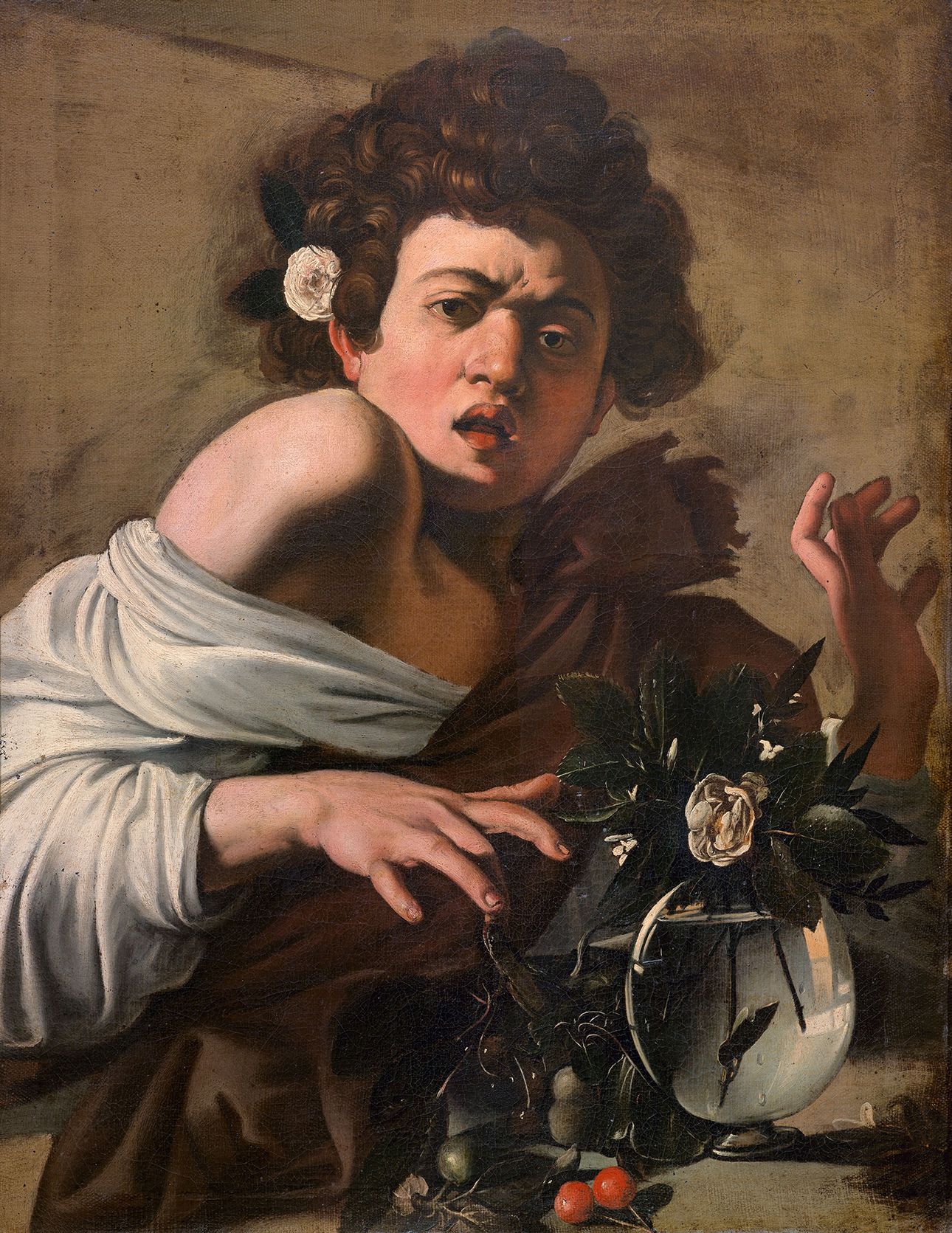The poet‘s aim is wonderment…
The innermost motions of the psyche were greatly important to Caravaggio‘s contemporaries. Emotions were at the centre of everything in the seventeenth century: paintings and sculpture, poetry and music.
Caravaggio, Bernini and their companions used some special tricks to depict affectations and trigger emotions in us, the viewers. These tricks include complex poses, facial expressions and looks, as well as light, colour and moving garments.

Gallerie Nazionali di Arte Antica – Bibliotheca Hertziana, Istituto Max Planck per la storia dell'arte/Enrico Fontolan
The artists did not only want the viewers to join in the wonderment. They consciously aimed for their works to astonish us.
Caravaggio‘s Narcissus is particularly stunning. He has not yet recognized the reflection he sees in the water as his own. Caravaggio shows Narcissus gazing in wonderment and fascination as well as affection and tenderness at this face in the water.
Michelangelo Merisi da Caravaggio
(Mailand 1571–1610 Porto Ercole)
Narcissus
c. 1600
Canvas, 113,3 × 94 cm
Rom, Gallerie Nazionali d’Arte Antica,
Palazzo Barberini, inv.-no. 1569,
gift of Vasilij Bogdanovič Khvoschinskij, 1916
The expression on the marble face of Bernini’s Medusa vividly displays her horror at her sudden death. At the same time, she appears so alive that the onlooker must fear petrification by her glance at any moment.
Gian Lorenzo Bernini
(Naples 1598–1680 Rome)
Medusa
Rome, 1638–1640
Marble with traces of original patina, H. 46 cm
Rom, Musei Capitolini, Palazzo dei Conservatori, inv.-no. MC 1166

© Sovrintendenza Capitolina ai Beni Culturali, Musei Capitolini – Pinacoteca Capitolina, Roma, Foto: Andrea Jemolo

Francesco Mochi chiselled out of the marble a youth whose face speaks volumes about his wonderment. Note the virtuous curl on his forehead.
Francesco Mochi
(Montevarchi 1580–1654 Rome)
Youth (St John the Baptist or the Archangel Gabriel ?)
Rome, c. 1605/10
Carrara marble, H 40.5 cm; base: black marble
Chicago, Art Institute of Chicago,
Inv.-no. 1989.1; purchased thanks to a restricted gift of Mrs Harold T. Martin through the Antiqurian Society, the Major Acquisitions Centennial Endowment, a prior gift of Arthur Rubloff, and the European Decorative Arts Purchase Fund
In his painting Boy Bitten by a Lizard, Caravaggio used his art to delve into the world of inner feelings. It is full of contradictions; the scene is dominated by lust and pain.
Michelangelo Merisi da Caravaggio
(Milan 1571–1610 Porto Ercole)
Boy Bitten by a Lizard
c. 1597/98
Canvas, 65,8 × 49,5 cm
Florenz, Fondazione di Studi die Storia dell’Arte Roberto Longhi, inv. no. 1980 N.78

© Fondazione di Studi di Storia dell’Arte Roberto Longhi, Firenze
Wonderment (meraviglia) and the associated astonishment (stupore) became key ideas in literature. The poet Giambattista Marino declared them to be the major criteria for judging poetry:
‘The poet aims for wonderment, I speak of masters, not dilettantes. Those who cannot cause astonishment must retreat into the stables.‘
